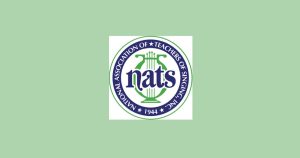Making a few simple changes to how you work in your studio can help singers with dyslexia feel nurtured and included.
Ensuring your voice studio is inclusive to everyone, be they neurotypical or neurodiverse, may seem like a laudable but somewhat overwhelming goal.
But, as Dr Shannon Coates explains on the Singing Teachers Talk podcast, even small accommodations can go a long way toward supporting neurodiverse students.
On the podcast, she explains some of the challenges students with dyslexia face and how teachers can implement dyslexia-friendly policies.
Here’s what she had to say.
First of all, let’s be clear about what dyslexia is
Dyslexia is a processing difference. People with dyslexia often find it challenging to recognise and process symbols, making reading, writing and spelling difficult.
For example, people with dyslexia may struggle to differentiate between the lowercase letters g, b, d and p.
“If you have dyslexia, those letters look the same to you—they’re all just a stick and a ball,” says Dr Coates.
“It can also be challenging to associate phonemes or sounds to those symbols and put all of those symbols together with their phonemes in the order that they need to be in.”
Considerations for teaching students with dyslexia
If a person struggles to read standard text, imagine what it’s like being presented with a sheet of music.
Along with quavers and semi-quavers (more sticks and balls), you have sharps, flats, treble clefs and bass clefs.
Add in the fact that these symbols are written on a music staff, and you start to realise how challenging and frustrating reading music can be for a person with dyslexia.
Do we need to teach students to read music?
Many singing teachers believe teaching their students to read music is important. But is it always necessary?
Dr Coates says: “It feels like that’s what we’re getting paid for; that’s part of a ‘good education’, right?
“While that isn’t necessarily wrong, it is also not useful for lots of singers. Lots of singers do not need to learn to read music to accomplish their goals.
“We need to examine what success looks like and what the student’s goal is. There are so many ways that we can teach musicality and encourage musicality and music literacy without a note.”
If teachers make students feel they ‘have’ to be able to read music to be a singer, they risk setting people with dyslexia up for failure.
“It could put them off altogether,” Dr Coates says. “They may never want to take singing lessons or do music again, because they believe that that’s an integral part of what they’re supposed to do.”
Tips for creating an inclusive singing studio
– Use dyslexia-friendly fonts when printing out materials such as lyric sheets.
– Avoid small fonts; print text in 12 to 14 points.
– Print materials on coloured paper. Dark-coloured text on a light (but not white) background can be helpful.
– Have materials available on an iPad so students can adjust the size of text as they wish.
– Read the British Dyslexia Association’s style guide for more tips.
Dr Coates recommends making these changes across the board in your studio. “You don’t have to say, ‘Oh, you’re dyslexic. Let me get out the special paper and font for you’.
“You can just use a dyslexic-friendly font or coloured paper so that no one has to say: ‘I’m dyslexic, would you please make this work better for me?’.”
Learn more
Listen to the full interview with Dr Coates on the Singing Teachers Talk podcast, where she also discusses:
– The importance of using considerate language when we discuss neurodiversity.
– Strategies to support singers with ADHD.




